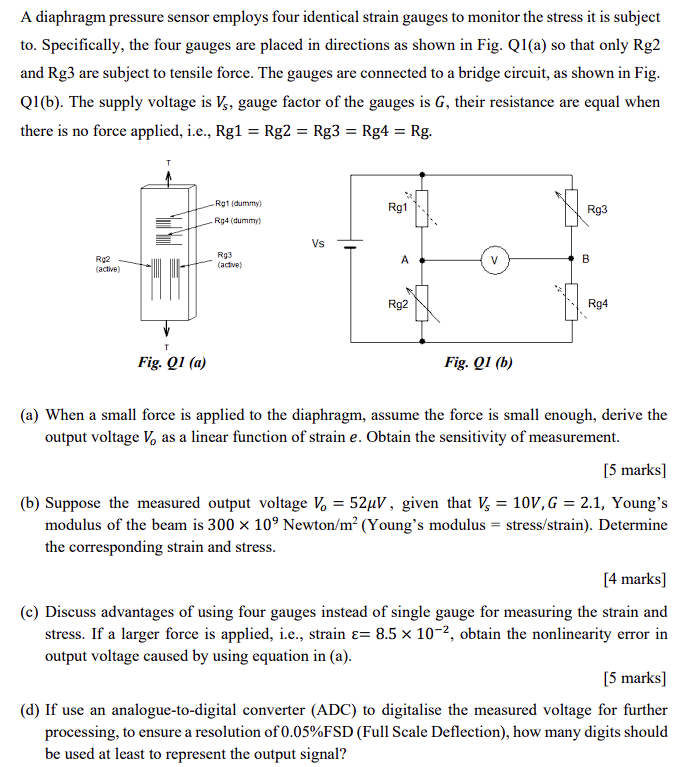Answered step by step
Verified Expert Solution
Question
1 Approved Answer
A diaphragm pressure sensor employs four identical strain gauges to monitor the stress it is subject to. Specifically, the four gauges are placed in

A diaphragm pressure sensor employs four identical strain gauges to monitor the stress it is subject to. Specifically, the four gauges are placed in directions as shown in Fig. Q1(a) so that only Rg2 and Rg3 are subject to tensile force. The gauges are connected to a bridge circuit, as shown in Fig. Q1(b). The supply voltage is Vs, gauge factor of the gauges is G, their resistance are equal when there is no force applied, i.e., Rg1 = Rg2 = Rg3 = Rg4 = Rg. Rg2 (active) T Fig. Q1 (a) Rg1 (dummy) Rg1 Rg4 (dummy) Vs Rg3 (active) A V B Rg2 Fig. Q1 (b) Rg3 Rg4 (a) When a small force is applied to the diaphragm, assume the force is small enough, derive the output voltage Vo as a linear function of strain e. Obtain the sensitivity of measurement. [5 marks] (b) Suppose the measured output voltage V = 52V, given that V = 10V, G = 2.1, Young's modulus of the beam is 300 109 Newton/m (Young's modulus = stress/strain). Determine the corresponding strain and stress. [4 marks] (c) Discuss advantages of using four gauges instead of single gauge for measuring the strain and stress. If a larger force is applied, i.e., strain = 8.5 10-2, obtain the nonlinearity error in output voltage caused by using equation in (a). [5 marks] (d) If use an analogue-to-digital converter (ADC) to digitalise the measured voltage for further processing, to ensure a resolution of 0.05%FSD (Full Scale Deflection), how many digits should be used at least to represent the output signal?
Step by Step Solution
There are 3 Steps involved in it
Step: 1

Get Instant Access to Expert-Tailored Solutions
See step-by-step solutions with expert insights and AI powered tools for academic success
Step: 2

Step: 3

Ace Your Homework with AI
Get the answers you need in no time with our AI-driven, step-by-step assistance
Get Started


